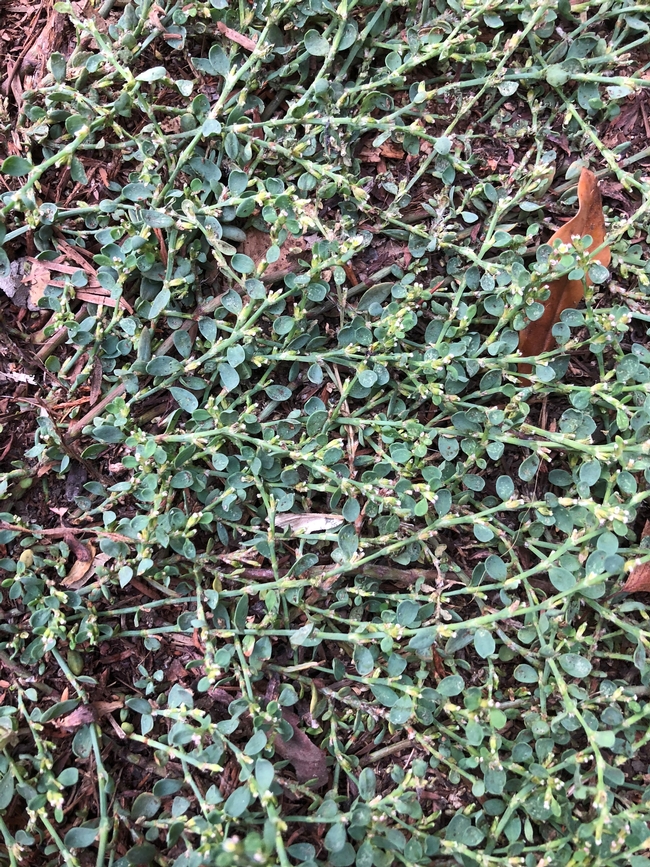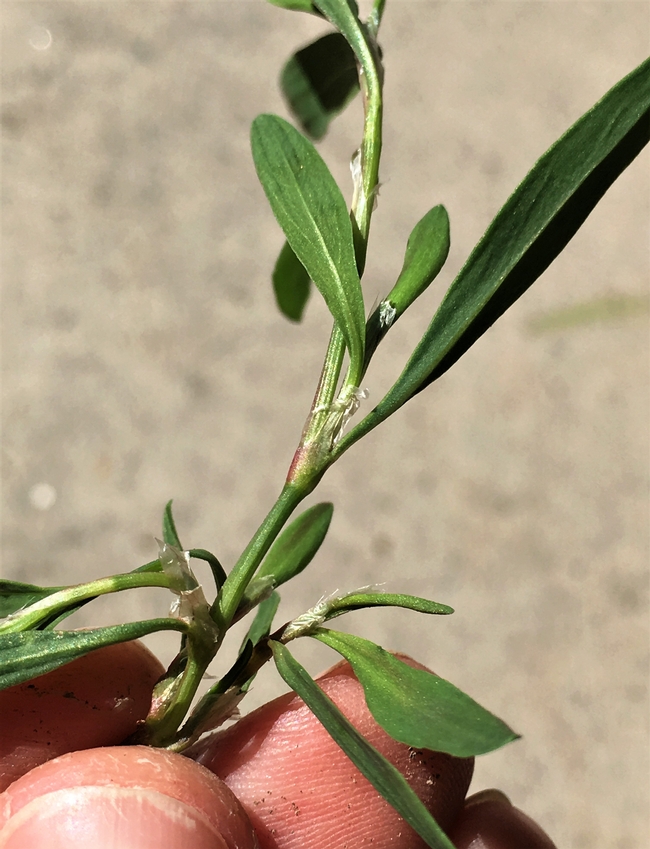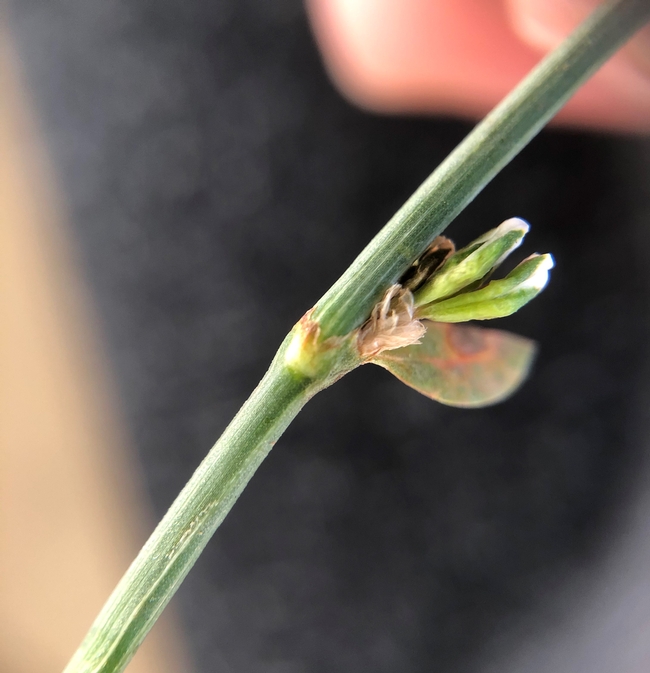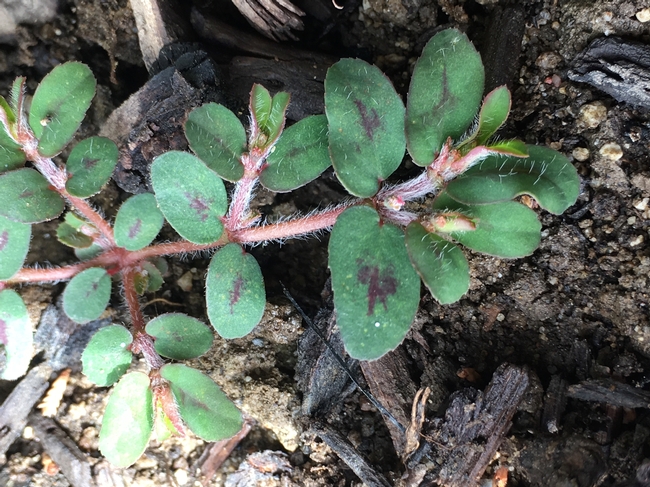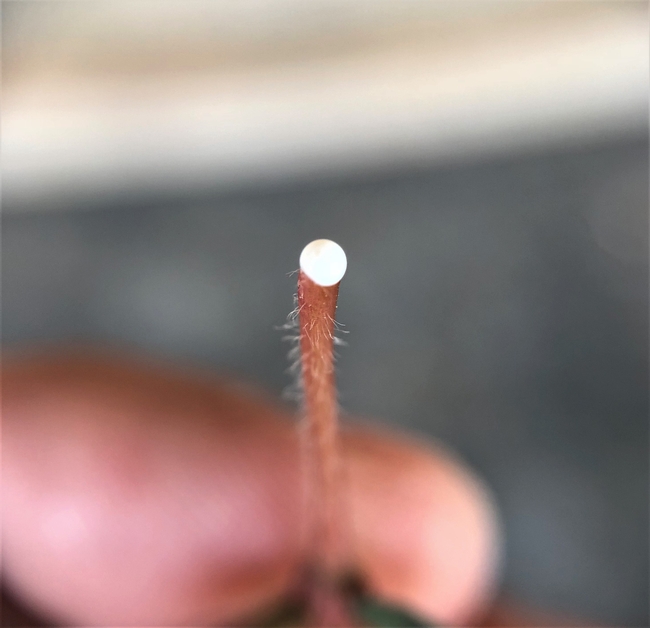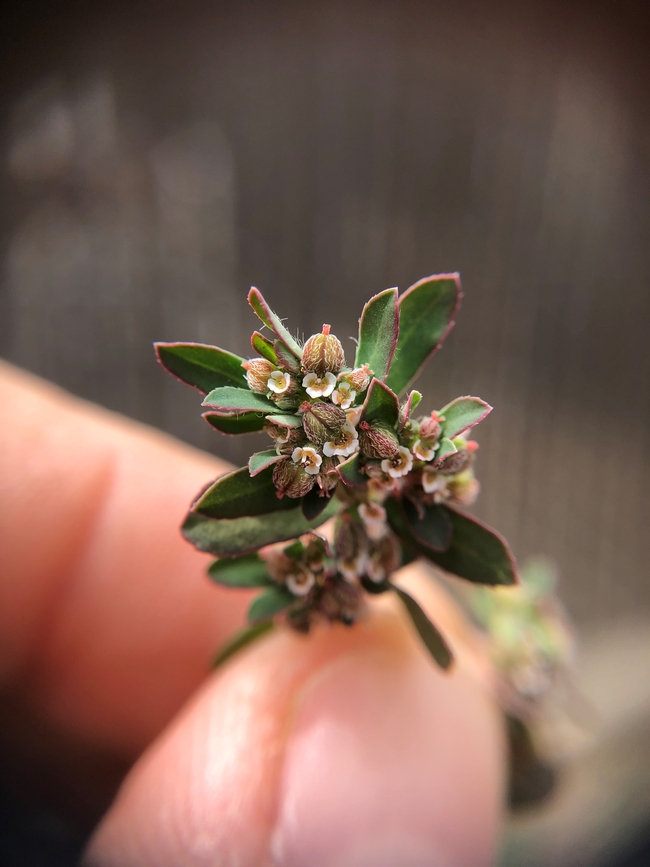Recently I was asked to help identify prostrate knotweed (Polygonum aviculare) that was collected from an alfalfa field. Admittedly, the tough and wire-like specimen that was submitted to me at the end of autumn didn't much resemble the succulent seedlings that I have often observed emerging in tree and vine systems in early spring. Consequently, I dug out my 'Weeds of the West' and 'Weeds of California and Other Western States' books and double-checked with colleagues to ensure that my ID was accurate. This post is meant to build on that effort and describe the morphological traits that are characteristic of prostrate knotweed and how to differentiate the species from a similar-looking weed, spotted spurge (Euphorbia maculata).
Figure 1. Prostrate knotweed (Polygonum aviculare) a mat-forming annual (or sometimes perennial) weed.
Prostrate knotweed is an annual (or sometimes short-lived perennial) weed that is widely distributed throughout North America. The species spreads by small (1.5-2 mm wide x 2.5-3 mm long), 3-sided, brown seeds that require a period of cold-moist stratification for germination. Seeds germinate and seedlings emerge in late-winter to early-spring (in my experience, it is one of the earliest species to emerge).
Figure 2. Picture of a prostrate knotweed seedling exhibiting swollen stem nodes and the presence of ocrea (papery membranes that encircle the bases of leaves and adjoining stems).
Prostrate knotweed seedlings grow upright, initially, following emergence. Leaves are alternate and are lanceolate to oblong in shape (leaves on mature plants can be more ovate in appearance). At the base of each leaf, a membranous sheath (called an ocrea) surrounds the swollen stem node. As the plants mature, they become more prostrate (especially after mowing or cutting events), branched and mat-like. The stems become wire-like and exhibit longitudinal ribs. Flowers are white (often with a pinkish tinge on the margins) and are held in small clusters in the leaf axils.
Figure 3. A stem of prostrate knotweed exhibiting longitudinal ridges and the presence of flower buds in a leaf axil.
The species can be confused with spotted spurge (Euphorbia maculata), which is also a mat-forming weed that can occupy some of the same habitats (agricultural areas, landscapes, other disturbed sites) as prostrate knotweed. Spotted spurge is distinguished from prostrate knotweed by it's opposite leaf pattern, the presence of purple blotches on the uppersides of leaves(hence the name spotted spurge), and its densely hairy, red stems. When broken, the stems of spotted spurge exude a milky sap. Not unlike prostrate knotweed, the flowers of spotted spurge are also help in the leaf axils.
Figure 4. Spotted surge (Euphorbia maculata) has opposite leaves, and red, hairy stems.
Figure 5. Milky sap exuding from a broken spurge stem.
Figure 6. Spurge flowers.
Prostrate knotweed grows extremely well on compacted soils (it produces a deep taproot) where many other species are less competitive. Consequently, one strategy for the management of this species is to reduce traffic and improve soil aeration. Mowing or cutting may not be effective for controlling the species because of its low growth habit. Seeds are assumed to be long-lived, so preventing the plants from reaching reproductive maturity is an imperative to prevent the continuous return of propagules to the seedbank. Information about the chemical control of prostrate knotweed in individual crops can be found at the UC IPM website: https://www2.ipm.ucanr.edu/agriculture/
For more information about the biology and ecology of prostrate knotweed, please see the following websites:
http://ipm.ucanr.edu/PMG/PESTNOTES/pn7484.html
http://ipm.ucanr.edu/PMG/WEEDS/common_knotweed.html
https://oregonstate.edu/dept/nursery-weeds/weedspeciespage/prostrate_knotweed/knotweed_page.htm
